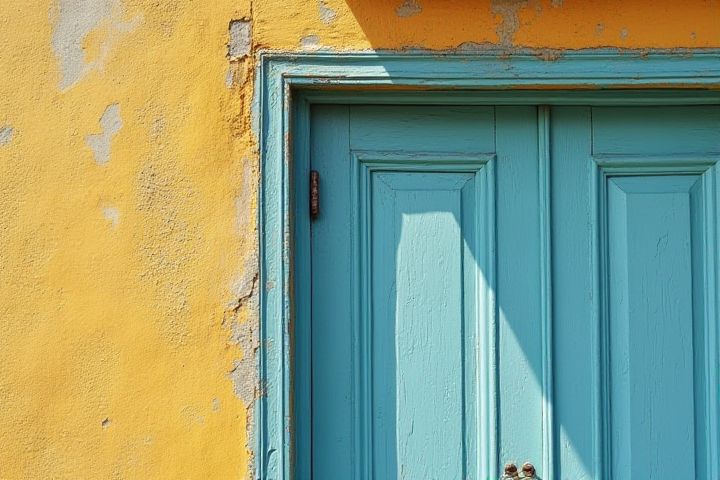
The ideal time to paint the exterior of a house is during mild weather, typically in late spring or early fall, when temperatures range between 50degF and 85degF. This temperature range allows the paint to adhere properly and dry without risk of blistering or flaking. It's essential to choose a day with low humidity and minimal wind to ensure even application and optimal curing. Prior to painting, inspect the siding for any repairs needed, as this will enhance the longevity of your paint job. Using high-quality, weather-resistant paint can significantly improve the durability of your exterior finish, protecting your home from harsh elements and improving curb appeal.
When To Paint The Exterior Of A House
Mild temperatures
Painting the exterior of a house is best done during mild temperatures, ideally between 50degF and 85degF. This temperature range allows the paint to adhere properly and dry evenly, minimizing issues like bubbling or peeling. Spring and early fall typically provide these optimal conditions, avoiding extreme heat or cold. Ensure that the forecast is free from rain or high humidity for at least 24 hours after painting to achieve the best results.
Dry weather
The exterior of your house should be painted during dry weather to ensure optimal adhesion and longevity of the paint. Ideal conditions involve temperatures between 50degF and 85degF, with low humidity levels to facilitate proper drying. Painting during dry weather prevents issues such as paint bubbling, peeling, and uneven finishes caused by moisture. Plan your project for a time when local weather forecasts indicate several consecutive dry days, allowing for a smooth and durable application.
Low humidity
Painting your house's exterior is best accomplished when humidity levels fall between 30% and 50%. Low humidity conditions allow the paint to dry adequately, reducing the risk of mildew or condensation. Scheduling your painting project during late spring or early fall often provides the optimal weather for this task. Monitoring the local weather forecast can help you choose a day where temperatures range from 50degF to 85degF, enhancing the paint's adhesion and longevity.
Minimal wind
The optimal time to paint the exterior of your house is during periods of minimal wind, typically found in late spring or early fall. Wind speeds should ideally remain below 10 mph to prevent debris from sticking to wet paint, ensuring a smooth finish. Temperature plays a crucial role as well; it is best to paint when temperatures are between 50degF and 85degF for proper paint adhesion. Additionally, low humidity levels, around 40% to 70%, support faster drying times, resulting in a more durable exterior.
Time to dry
The optimal time to paint the exterior of a house largely depends on environmental conditions, especially humidity and temperature, as these factors directly influence drying time. For effective moisture evaporation, aim for painting during periods of low humidity, typically in late spring or early fall. Ideal temperatures hover between 50degF and 85degF, ensuring that the paint sets correctly and adheres to the surface without issues. Always check the manufacturer's recommendations regarding drying times between coats, as these can vary based on the type of paint used.
Daylight hours
For optimal results when painting the exterior of your house, aim for a time when the temperature ranges between 50degF and 85degF. The best daylight hours typically occur between 10 AM and 4 PM, as this ensures adequate sunlight without extreme heat that could cause the paint to dry too quickly. Aim to complete your project in the spring or early fall to avoid unexpected weather changes like rain or humidity. By focusing on these factors, you can achieve a smoother finish and better durability for your paint job.
Tree pollen season
Tree pollen season typically spans from late winter to early spring, when many trees release their pollen, often peaking between March and May. During this time, pollen can settle on freshly painted surfaces, potentially causing adhesion issues and surface blemishes. For optimal results, aim to paint your house outside of this period, ideally late spring or after a summer rain, when pollen levels drop significantly. Always check local pollen forecasts to determine the best timing for your exterior painting project.
Local regulations
Before painting the exterior of your house, it's essential to consult local regulations, which may dictate specific colors, materials, and techniques permissible in your area. For example, historical districts often require homeowners to adhere to a palette that suits the architectural style of the home, while homeowners' associations might have their own guidelines. Some municipalities may have specific painting seasons based on weather conditions, typically favoring temperatures between 50degF and 85degF for optimal adhesion and drying. Always check your local zoning office or HOA guidelines to ensure compliance and avoid potential penalties.
Surface preparation
Surface preparation is crucial when painting the exterior of a house to ensure a long-lasting finish. Start by power washing the exterior to remove dirt, mold, and old paint, making sure to focus on areas with heavy buildup. After cleaning, inspect the surface for cracks, peeling paint, or other defects; repair these issues with appropriate fillers and primers. Allow the surface to dry completely before applying paint, which will help achieve impeccable adhesion and a smooth finish.
Quality materials
Choosing the right time to paint the exterior of your house is crucial for achieving long-lasting results. The optimal conditions include temperatures between 50degF and 85degF, with low humidity, typically in late spring or early fall. Quality materials, such as 100% acrylic latex paint, provide superior adhesion and resistance to fading, ensuring your home maintains its vibrant appearance for years. Investing in high-grade primers and finishes can enhance durability and protect against weather elements, prolonging the life of your exterior paint job.
